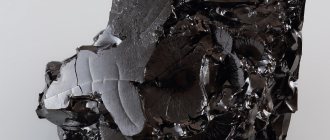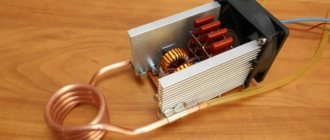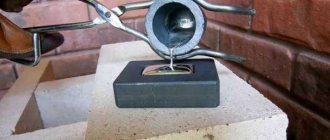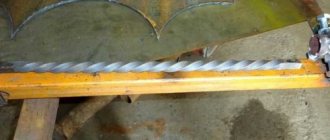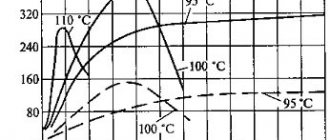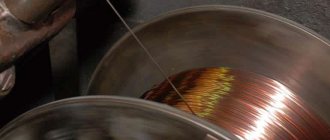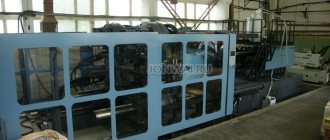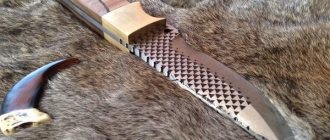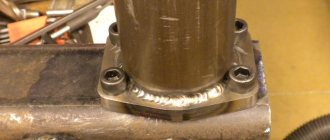Crucibles for melting non-ferrous metals - Metalist's Handbook
Graphite crucibles in Moscow at minimal prices.
: favorable working conditions, production of goods according to customer drawings and quality, which is always above all! Today, a rich range of crucibles made from a variety of materials is produced. Metal crucibles are rarely used, as they easily melt with their contents.
Crucibles made of quartz and hard glass are much more practical and ideal for metals with low melting points. Their choice for aluminum alloys is excluded.
Crucibles are also produced from refractory clay, oxide-silicates, lime, etc., however, such products are still significantly inferior to graphite crucibles.
| Graphite crucible | Crucible 528-018 | Crucible 776-247 |
Make an order
Graphite crucibles are containers for working with metals that have fire-resistant properties. They are indispensable for heating, pouring and burning. They are most in demand in the chemical industry and metallurgy.
Crucibles help organize the melting process, as well as the testing process of both ferrous and non-ferrous metals in induction furnaces.
Structurally, crucibles designed for directly heated furnaces are an elongated container with a “spout” for draining.
Graphite crucibles are also successfully used in the jewelry industry: here, to make even the most complex and intricate products from bronze, silver and gold, they are placed in an induction furnace unit, where heating occurs.
Graphite crucibles can contain different components: they are made from pure graphite or from binders and graphite powder.
More durable and fire-resistant - the first: in these products, the metal melt is accompanied by a reduction atmosphere.
Crucibles made of graphite powder and various binding components are characterized by less resistance to wear and quickly become dirty.
Features of graphite crucibles
Graphite crucibles are indispensable when working with copper, nickel, steel, bronze, zinc, aluminum, etc. The percentage of graphite content in the composition provides the following advantages:
- 1. The crucible is not wetted when metals are melted.
- 2. When melting metals, oxygen is removed and metal oxide is reduced.
- 3. Graphite products have a long service life.
- 4. They are resistant to temperatures up to 2500 ° C, which reduces operating time.
- 5. Can be used in research to determine the percentage of oxygen, nitrogen and hydrogen in a metal under laboratory conditions.
- 6. After the cleaning procedure, they are reused; crucibles made of ceramics and glass do not have the same quality.
- 7. Products made of graphite are characterized by resistance to mechanical stress. The rule applies here: higher t – higher strength.
Types of crucibles
When creating graphite crucibles, the main thing is the design features of the induction furnace where they will be used, and the expected loads on the product. Regulates the production process GOST 4596-75. It specifies, among other things, the crystal size and the maximum value of ash waste in the finished product.
These products, like graphite blades, are machined from blanks of different grades of graphite, which are selected taking into account the characteristics of the future use of the finished product. The shape of graphite crucibles can be either cylindrical, conical or shaped.
The types of products produced and their qualities are reflected in this table:
| Types of Graphite Crucibles | Properties and application features |
| Conical | They have the shape of a cone into which the grip rests. Used when manual filling is necessary |
| Cylindrical | Cylindrical crucibles are installed in high-frequency and induction furnaces. Particularly effective for metal casting |
| Shaped | Universal type of crucibles, because Suitable for melting almost all metals and alloys. These crucibles are often used to make jewelry. |
| Special | Used in the jewelry industry for melting precious and noble metals. Often serve as mold molds |
Product range "Graphite-USSO"
The Graphite-USSO enterprise produces graphite crucibles of any size and type. The raw materials for them are various grades of graphite. We offer customers a range of products made from graphite grades such as:
- durable fine-grained graphite (MGG, MG);
- dense structural graphite with improved structure (ZOPG, GMZ);
- electrode graphite (GE);
- antifriction metalgraphite (AG).
In addition, we offer graphite crucibles for gas analysis in devices Balzers, Metavac, HORIBA, Strolein, etc.
Upon request, we can produce products from other types of graphite. To order a product, please call the indicated phone numbers or write by email
You may also be interested in:
Graphite rings
Graphite crucible
A crucible is a fireproof container designed for melting metals. In crucibles containing graphite, steel or copper and alloys based on it are melted. The production of molten metal is carried out in crucible furnaces.
Examples of graphite crucibles
This melting method is limited by the volume of melt produced. Graphite crucibles are used in laboratories, factories to produce rare alloys or to produce castings from copper and precious metals, as well as in home workshops.
Features of Graphite Crucible
Graphite crucibles for melting non-ferrous metals have a fairly long service life. They resist oxidation, thermal and mechanical effects of the melt well. Crucibles are mainly used in conjunction with induction heating furnaces.
Graphite Crucible Induction Furnace
Graphite, as a material, has the following properties:
- heat resistance;
- fire resistance;
- high thermal conductivity;
- increasing strength characteristics when heated;
- low specific gravity;
- low porosity;
- prevention of oxidation;
- resistance to: corrosion;
- sticking;
- burnt.
Graphite crucibles are not made from pure graphite. To form the mixture, refractory clay (fireclay, alumina) and quartz sand are added to the graphite. Some of the clay can be replaced with kaolin. High-quality containers can easily carry a significant number of heats.
For steel melting, the composition of the charge mixture is selected according to the requirements for the purity and characteristics of the steel.
| Batch materials, % | Graphite | Alumina | Kaolin | Chamotte |
| Alloy type | ||||
| High strength steel | 54 | 35 | — | 10 |
| Medium hard steel | 40 | 38 | — | 22 |
| Razor steel | 12 | 40 | 40 | 8 |
| Quality steel (clean) | 3 | 87 | 10 | — |
| Copper | 8 | 67 | — | 25 |
| Brass, bronze | 12 | 50 | 13 | 25 |
| Gray cast iron | 53 | 43 | — | 4 |
| Modified cast iron | 50 | 40 | — | 10 |
For smelting copper and cast iron, Blaninger proposed the following proportions of crucible charges.
| Batch materials, % | Copper alloys | Cast iron | ||||
| A | B | C | D | E | F | |
| Graphite | 48 | 57,5 | 55 | 50 | 58 | 55 |
| Clay | 32 | 25,5 | 35 | 40 | 35 | 30 |
| Kaolin | 6 | 10,5 | 5 | — | — | 7 |
| Quartz sand | — | — | — | 5 | 7 | 8 |
| Chamotte | 14 | — | 5 | 5 | — | — |
| Silicon sand | — | 6,5 | — | — | — | — |
An important production indicator is the cost of finished products with given characteristics. Therefore, various types of graphite are used to make crucibles.
Grain graphite is not used. Lamellar or crushed into a small fraction is used.
Large-lamellar graphite is fire-resistant, heat-resistant and has a high density.
Fine-plate graphite (amorphous) is less resistant and the number of melts in it is much less. The strength characteristics of crucibles depend on the ash content of graphite.
Graphite crucibles for steels
Crucibles for steels are made of highly concentrated graphite, the content of which reaches 90%. But the presence of iron oxides should be kept to a minimum. When smelting copper, graphite is partially replaced by retort graphite or coke.
Recently, the following grades of graphite have found widespread use:
- EG2 – electrographite;
- GM – fine-grained graphite;
- MPG – isostatic graphite.
Electrographite
Electrographite EG2 differs from the graphite from which electrodes are made in that it has less porosity. This grade is recommended for re-melting or for melting with slag removal.
Graphite crucibles
Graphite crucibles from the manufacturer. Available from stock, online ordering, prompt delivery throughout Russia and the CIS, discounts on graphite crucibles for all regular buyers from GraphiteService CJSC
Graphite crucibles - products are machined from special blanks of various grades of graphite, depending on the purpose of the crucible.
manufactures 4 types of crucibles - cylindrical, conical, shaped and special according to individual drawings.
These products are used in furnaces for smelting ferrous and non-ferrous metals, vacuum and high-frequency furnaces. Due to their good electrical conductivity, they can be used for smelting precious metals. In a protective gas atmosphere, crucibles are operational up to 2500 C. Replacing stuffed crucibles with machined graphite ones is highly effective.
Fireproof graphite crucibles
TU 2-036-920-82, TU 1590-020-00221209-04
Fireproof crucibles, depending on the raw materials used in the manufacture, can be graphite-containing, fireclay, or silicon carbide. The products are designed to operate in an oxidizing atmosphere in open hearths or other furnaces where heating and melting is carried out with solid fuel.
Graphite crucibles are used for melting, distributing and casting non-ferrous metals and alloys in industrial and laboratory conditions.
Graphite crucibles MAMMUT
MAMMUT melting crucibles are shaped products made of graphite, silicon carbide and an environmentally friendly binder. The products are made using isostatic molding, fired at high temperatures and protected with a durable glaze coating.
In terms of their performance characteristics - thermal conductivity, heat resistance, oxidation resistance and service life, MAMMUT crucibles meet the highest requirements.
MAMMUT crucibles vary depending on the following technical data:
- heating method
- type of furnace used for smelting
- type of metal used to fill the crucible
- metal melting temperature
Luga crucibles - stamps
| Brands of Luga crucibles | Purpose |
| WITH | For casting non-ferrous metals and their alloys at temperatures not exceeding 1600°C |
| A | For melting non-ferrous metals and their alloys with a melt temperature not exceeding 1500°C in resistance and induction furnaces |
| TO | For melting non-ferrous metals and their alloys with a melt temperature not exceeding 1600°C in induction furnaces and furnaces with gaseous and liquid fuels |
| X | For melting non-ferrous metals and their alloys with a melt temperature not exceeding 1500°C in resistance furnaces and flame furnaces |
| T | For melting precious metals and their alloys with a melt temperature not exceeding 1600°C |
| N | For testing metals at temperatures not exceeding 1500°C |
Dimensions of Luga crucibles type AC
| Conventional capacity of the crucible for copper, kg | D | H | S1 | S2 |
| 3 | 100 | 122 | 9±1 | 12 |
| 5 | 120 | 145 | 10±2 | 15 |
| 10 | 145 | 165 | 11±2 | 15 |
| 20 | 175 | 220 | 15±2 | 23 |
| 30 | 220 | 260 | 20±3 | 28 |
| 50 | 250 | 300 | 25±3 | 33 |
| 75 | 285 | 345 | 25±3 | 33 |
| 100 | 305 | 370 | 27±3 | 35 |
| 150 | 350 | 450 | 30±3 | 38 |
| 200 | 400 | 470 | 35±3 | 43 |
| 300 | 445 | 530 | 37±3 | 45 |
| 400 | 500 | 600 | 40±4 | 50 |
| 500 | 523 | 620 | 40±4 | 50 |
Dimensions of Luga crucibles types AA, AK, AH, AN
| Conventional capacity of the crucible for copper, kg | D | N | S1 | S2 |
| 0,1 | 30 | 40 | 3±1 | 5 |
| 0,3 | 50 | 60 | 5±1 | 5 |
| 0,6 | 60 | 70 | b±1 | 7 |
| 1 | 72 | 88 | 9±1 | 11 |
| 3 | 110 | 130 | 10±2 | 18 |
| 5 | 120 | 145 | 10±2 | 11 |
| 10 | 145 | 175 | 13±2 | 18 |
| 50 | 255 | 310 | 20±3 | 30 |
| 75 | 290 | 350 | 25±3 | 30 |
| 100 | 300 | 370 | 25±3 | 30 |
| 150 | 360 | 455 | 30±3 | 45 |
| 200 | 410 | 490 | 35±3 | 55 |
| 300 | 440 | 555 | 30±3 | 55 |
| 400 | 500 | 610 | 40±4 | 60 |
| 500 | 520 | 635 | 50±5 | 60 |
| 600* | 540 | 765 | 50±5 | 60 |
| 2000 | 880 | 1000 | 60±5 | 80 |
*zinc capacity Note. Luga crucibles type AN are manufactured with a capacity of up to 10 kg.
New crucible markings
| New designation | Old designation |
| A | TGG |
| WITH | TG |
| TO | TKG |
| X | US |
| T | A |
| H | TS |
| D | TGDM |
supplies graphite crucibles in any volume throughout Russia and the CIS countries. You can find out prices for crucibles by phone or through the application form.
What are crucibles and what are they for?
The organization of technological operations in production in one form or another involves the preparation of equipment. These are devices that play an auxiliary but important role. Such devices include crucibles.
As a rule, these are small cone-shaped containers in which heat treatment operations are carried out.
What are crucibles in a technological process? This is equipment, thanks to which various materials are processed in order to give them certain performance qualities.
Crucible design
The crucible has a fairly simple device. Its main task is to contain materials when exposed to extreme temperatures, and its features are logically expressed by thermal protective properties.
Another thing is that, depending on the material being served, the crucible may have different performance qualities in terms of chemical interaction with metals.
So, what are crucibles from a structural point of view? This is a small cone-shaped tank, which can be divided into two parts - upper and lower.
In terms of functionality, the lower part is more important, since it bears the greatest physical and thermal loads. As for the upper part, it can also have a high degree of technological responsibility if it is planned to use a full container for melting.
As already noted, the crucible is used in metal melting processes as a load-bearing container. However, even within this simple function, the specific tasks of such devices may differ. The most common use of a crucible is as a separate container for organizing metal melting.
In this way, in particular, the metal charge in metallurgy is serviced. But there are other ways of application, including as part of induction equipment. It would seem, why do you need a crucible in an induction furnace if it can be heated autonomously? There are many reasons for this.
Firstly, to ensure the purity of the alloy itself and the supply of high temperatures. The crucible acts as a kind of utensil that protects the metal from impurities and unwanted gases. Secondly, the surfaces of the internal walls of the induction furnace are also protected. There is a third way to use crucibles.
With the help of special mechanisms, metallurgists can move metal masses in a molten state using similar containers.
Aluminum melting crucible
Aluminum can be processed using graphite crucibles, which are capable of providing melting temperatures in the range from 400 to 1400 °C. In particular, so-called mammut crucibles are widely used.
The widest temperature range for aluminum melting is offered by universal containers. They provide both intense heating and direct melting. In the middle temperature range, an aluminum crucible is used, immersed in an electric furnace.
Such forms, in addition to temperature resistance, are distinguished by protective coatings against corrosion and mechanical durability. The most stable crucibles for servicing aluminum are used in gas furnaces, which provide a temperature regime of 1400 °C.
Less commonly practiced is the use of a combination of crucibles with liquid fuel furnaces.
Lead crucible
Crucibles of almost all common types can be used in molten lead, with the exception of fragile structures. For example, ceramic, porcelain and clay models are not recommended for use in this case. Of course, the same graphite crucible may be optimal, but its high cost limits the possibilities for application.
It should be noted that the crucible for melting lead is not so common in the professional sphere as in private households. Metal is used to make shot, weights, various molds and other devices that may be needed on the farm.
The optimal solution for such melting of a house may be a combined composition of graphite with affordable construction additives.
How to make a crucible with your own hands?
The task of those who are faced with the need to manufacture crucibles is to provide conditions for intensive drying or heating. At this point, you can create a mold from the same clay without much effort. Next, the heating element – the inductor – is prepared.
This is a cylindrical structure made of heat-resistant material and metal winding in the form of wire. How to make a crucible with an inductor of this type from scrap materials? It is enough to prepare four vacuum tubes and connect them in a parallel circuit.
After this, the shape of the future crucible is placed in the center and current is supplied through a generator set.
Conclusion
Thermal industrial equipment today is strictly segmented, which allows interested consumers to purposefully purchase the same furnaces designed specifically for melting metal workpieces.
Against this background, the crucible seems to be a morally and technologically obsolete device, although it is precisely its structural simplicity that does not allow it to be completely removed from production processes. But such products are not limited to industrial use. It is enough to remember what crucibles are.
The importance of this device for domestic purposes is difficult to overestimate. This small container is made from available raw materials, which can be made by a home craftsman for his household needs.
Of course, the quality of products made using such equipment will be quite low, but for private needs, high accuracy of geometric parameters is rarely required.
What types are used for melting in a crucible furnace?
There are also differences in crucible design. Those graphite crucibles that are intended for use in special equipment may have additional nozzles and different shapes.
The crucible for melting in a crucible furnace, which can be purchased in the Ruta catalogue, is selected based on the characteristics of the melting equipment. Classic crucible - it is better to buy it for use in furnaces with induction heating. Such elements are created from ceramics and can have different volumes.
Graphite crucible
A crucible is a fireproof container designed for melting metals. In crucibles containing graphite, steel or copper and alloys based on it are melted. The production of molten metal is carried out in crucible furnaces.
Examples of graphite crucibles
This melting method is limited by the volume of melt produced. Graphite crucibles are used in laboratories, factories to produce rare alloys or to produce castings from copper and precious metals, as well as in home workshops.
Making a crucible with your own hands
Making a crucible is not a labor-intensive task. To make it yourself using martel you will need:
- crushed graphite;
- whole graphite;
- graphite tube;
- fireclay martel;
- magnesite;
- felt.
Technological sequence:
- Take thick paper. Roll it into two cylinders of different diameters. The outer cylinder is hollow and larger in diameter, while the inner cylinder is closed on both sides and smaller in size.
- Mix the martel and other ingredients in a separate container. Next, mix with liquid glass until a homogeneous mass is obtained, the consistency of which is comparable to shortbread dough.
- Part of the resulting mass is distributed on a flat and smooth surface. Then place paper cylinders on it one inside the other to obtain the shape of a crucible. The distance between the paper cylinders is the thickness of the crucible walls.
- The remaining mass is filled into the prepared form.
- After formation, the paper elements of the mold are removed and the workpiece must be dried a little at room temperature.
- The crucible is then placed in an induction furnace to remove any remaining moisture from the mixture. It should be heated at low temperatures so that the mold does not burst. The process takes considerable time.
- After drying, the crucible is fired at a temperature of no more than 600 °C.
- The quality of the crucible is checked by tapping it, like a crystal glass.
Other types of crucibles
Crucibles are made not only from graphite, but also from cast iron and ceramics. Cast iron containers are used quite rarely due to: rapid oxidation of iron, its entry into a chemical reaction with the melt, high reactivity, low heat resistance and fire resistance. This is why cast iron models have a low cost.
Ceramic crucibles of various shapes
No reactions or changes occur in ceramic crucibles. Therefore, they are used for melting chrome, cobalt alloys and base metals.
Quartz crucible inserts
As an option, inserts into the crucible are made from quartz. They are used when it is necessary to exclude the interaction of the melt with graphite or cast iron.
, please select a piece of text and press Ctrl+Enter.
Material selection
Here, fire-resistant components play a serious role, which include:
- Ceramics is an average option, perfect for personal use. There are no reactions that can change the structure of the metal in this cookware, and it is excellent for cobalt, chromium and palladium.
- Clay is a substance that is used in the production of crucibles for jewelers. This component is highly fire-resistant and can withstand up to +1600 °C. If a person wants to create jewelry in his own room, but does not know what to use for melting, then this option is definitely the best.
- Graphite is excellent for melting galvanized and brass alloys, and its main advantage is durability. As for the operating temperature, it should not exceed +800 °C.
- Cast iron. Crucibles made from this substance are rare and belong to the budget categories. Also, products of this kind will have disadvantages in the form of rapid oxidation, low heat resistance and fast production (up to 30 heats).
Varieties of homemade crucibles
As an alternative, you can use an electric crucible, which you can do yourself without much difficulty. It has several uses, but the main one is gold refining.
Crucibles for melting non-ferrous metals
The organization of technological operations in production in one form or another involves the preparation of equipment. These are devices that play an auxiliary but important role. Such devices include crucibles.
As a rule, these are small cone-shaped containers in which heat treatment operations are carried out.
What are crucibles in a technological process? This is equipment, thanks to which various materials are processed in order to give them certain performance qualities.
Clay crucibles
The popularity of clay crucibles is due not so much to their positive performance qualities as to their availability and ease of manufacture. Typically, for such needs, fireclay clay is used, which during the manufacturing process is subjected to three stages of processing - creating a working mass, modeling and drying.
This technology has replaced porcelain containers. They could also be molded without much effort, but in practice they did not meet the requirements for strength and resistance to high temperatures. As a result, cracks and chips appeared.
What are clay crucibles in practice? This is a stronger material than porcelain, even at elevated temperatures. However, in terms of other qualities of the same interaction with metal alloys, clay is not so harmless - at least compared to alundum and graphite products.
Nevertheless, economically, the use of clay crucibles more than justifies itself when it comes to small typical melting operations.
Why use graphite?
- The crucible furnace can use containers made of pure graphite or a mixture of graphite powder with other binding materials. The former are more resistant to fire and stronger, having the ability to surround the metal melt with a reducing atmosphere. Crucibles made of graphite powder and additional components are endowed with less wear resistance and become dirty more quickly.
- Almost any metals and alloys can be melted in graphite crucibles.
- They have a long service life and can withstand even temperatures up to 2500˚C, which can significantly speed up the work process. Moreover, high temperatures in a crucible furnace only increase the strength of such containers.
- Graphite crucibles can be reused many times, the main thing is to remember to clean and polish them repeatedly.
- Their electrical conductivity allows the melting of precious metals without any problems.
